Meet The Warmun Artists Featured in New Japingka Exhibition
Dominic Kavanagh is the Gallery Coordinator at Warmun Art Centre. In this interview Dominic talks about some of the artists whose work is featured in the upcoming Japingka exhibition.
Patrick Mung Mung
Patrick is the son of George Mung Mung. George Mung Mung was a famed two-way communicator of Gija heritage. He talked a lot about putting Gija language and culture and gardiya, which is white fella language and culture, together. He wanted people to understand both ways of learning.
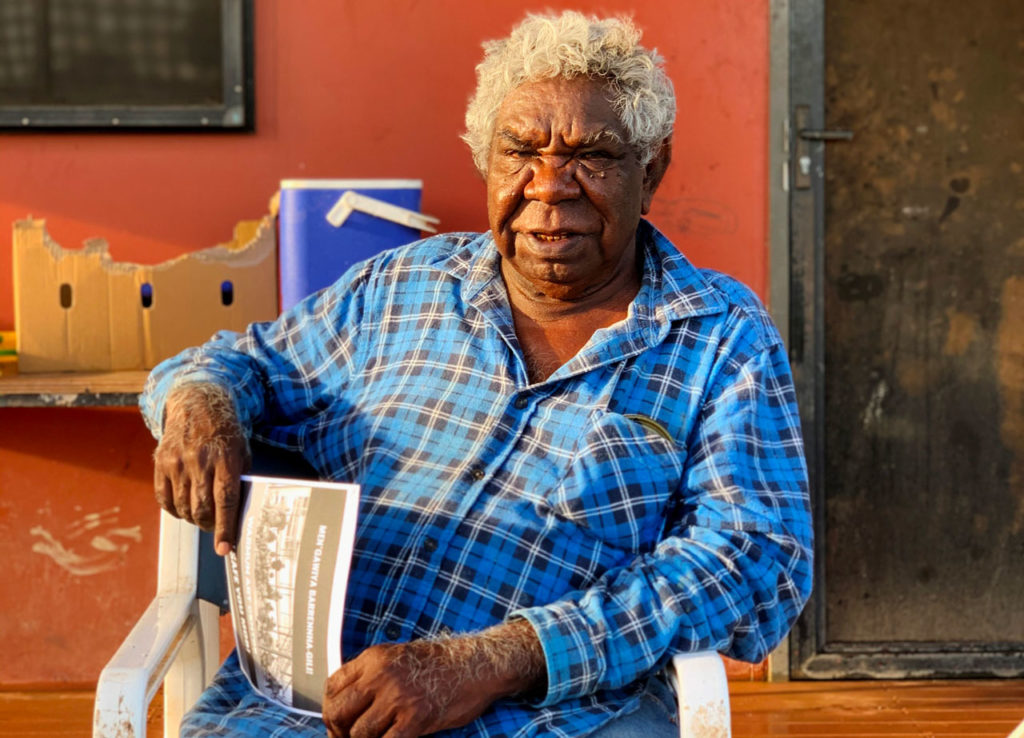
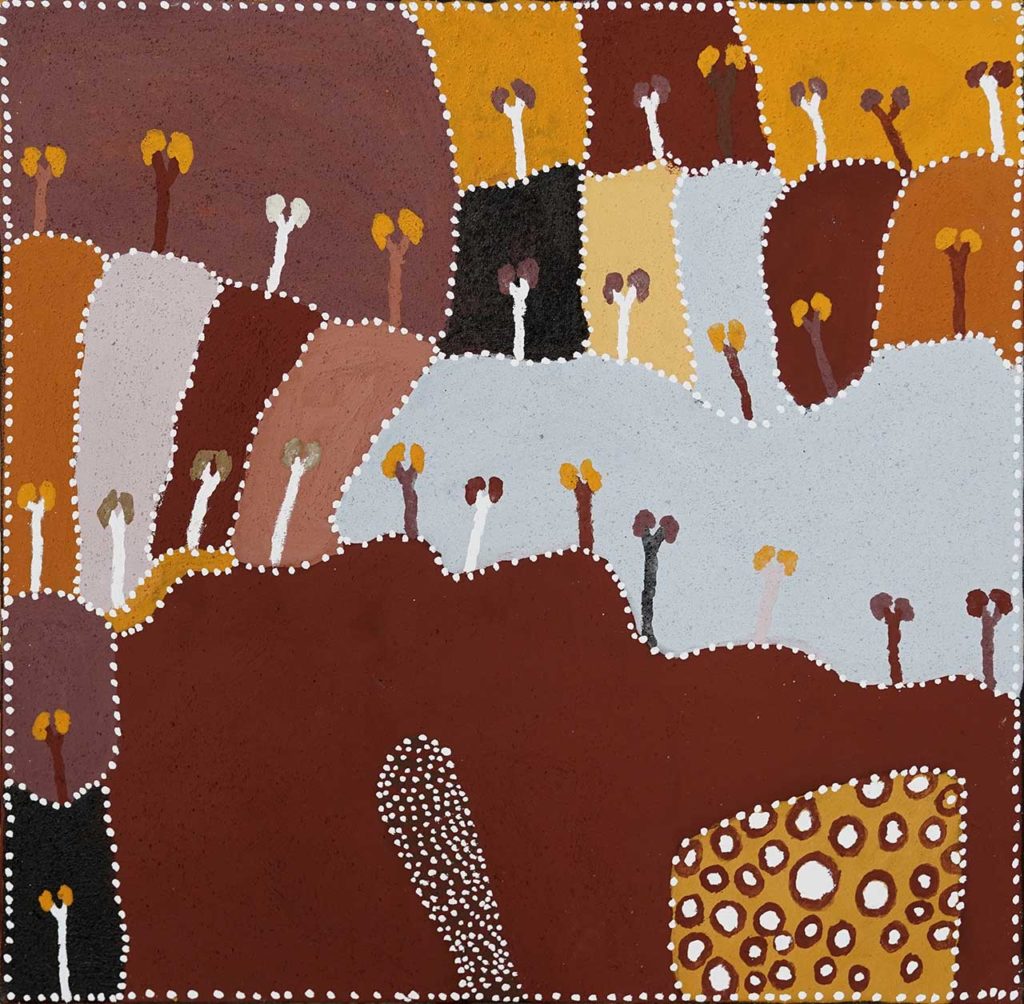
Patrick has really taken that mantle on in his rich landscape paintings of his country, which is Ngarrgooroon, just Northeast of Warmun. He paints the flora, the fauna and the kind of hilly landscape, which is so beautiful around that region. Over the last two years Patrick has won two major awards, one in New South Wales and one in Western Australia. Although he's a very senior man, he is still going from strength to strength in his artistic practise.
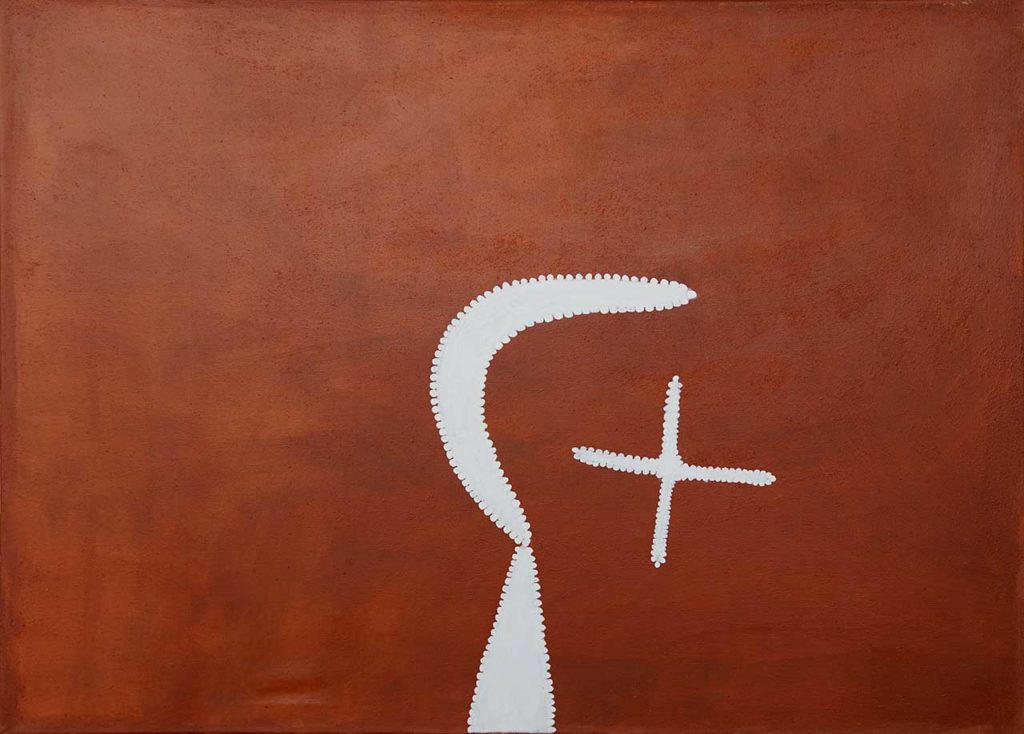
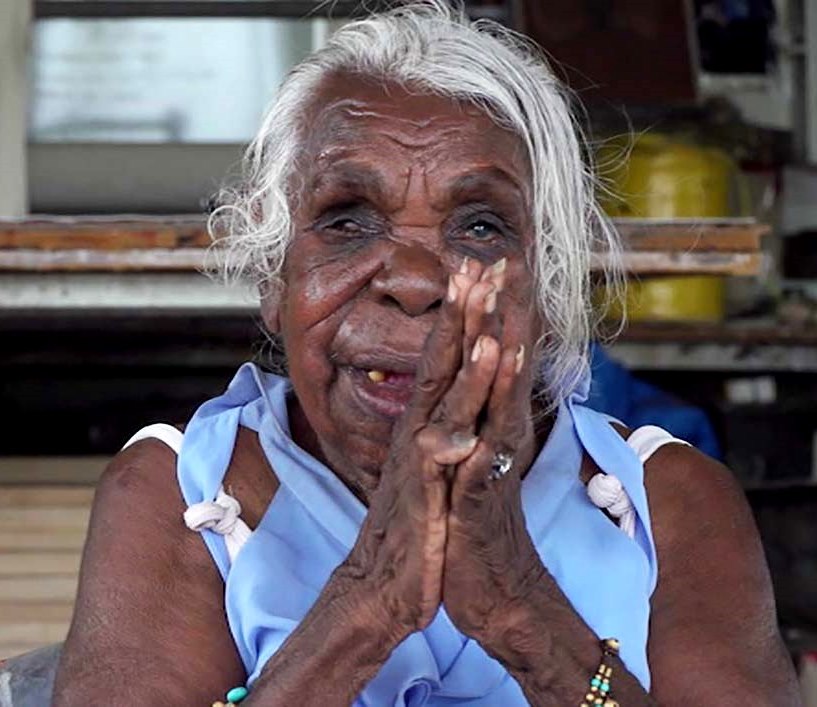
Mabel Juli
Mabel Juli is best known for her Garnkiny Ngarranggarni, which is the Moon Dreaming. It is a straight forward depiction of a moon and a star in a black night sky. It's a story of how the moon, a man named Garnkiny, fell in love with a woman who was the wrong skin group for him. He wasn't allowed to marry her and was banished to the top of a hill by the Gija people because he didn't want to live by societal norms. He cursed the Gija people and he said, "You will live and grow old and die, and I'm going to stay at the top of this hill forever and live on, and you're going to look up each month and see me coming to life at the top of this hill."
It is a story of kinship and forbidden love and death. I think the really beautiful pared-back way in which Mabel creates this story has resonated with a huge number of people across Mabel’s very long career. She's been painting for decades and so those works are here now in collections across the country and internationally.
Mabel also creates landscapes about Darrajayin, which is her traditional homeland. It is about an hour and a half south of Warmun. She creates paintings about station life as a young girl growing up, where she was forced to work for no pay and her and her family suffered at the hands of the owners.
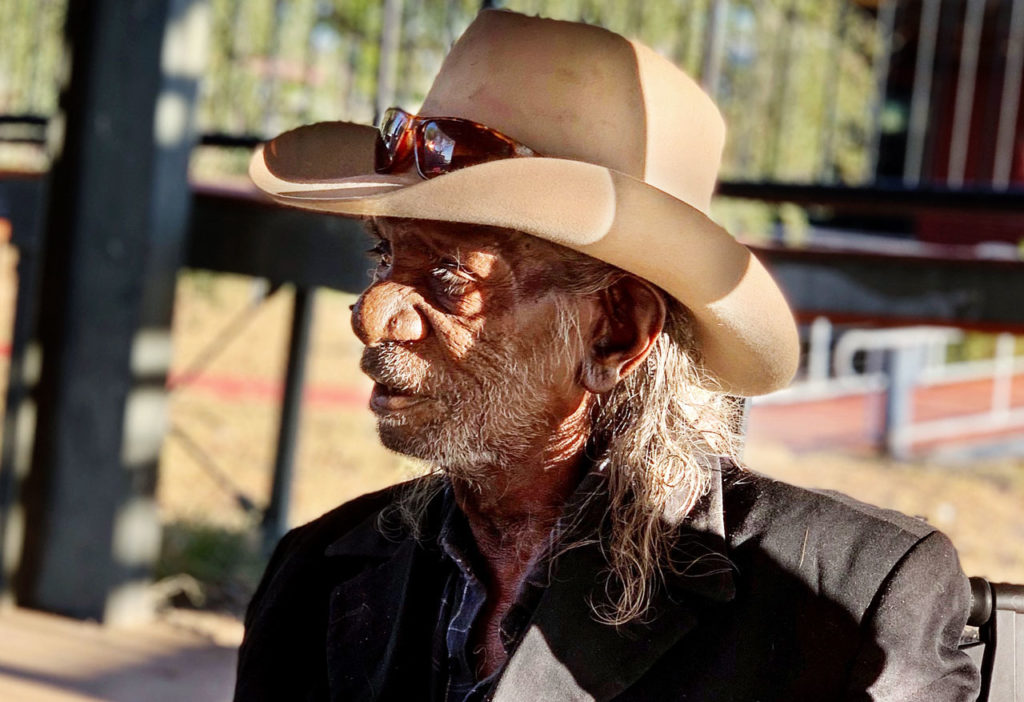
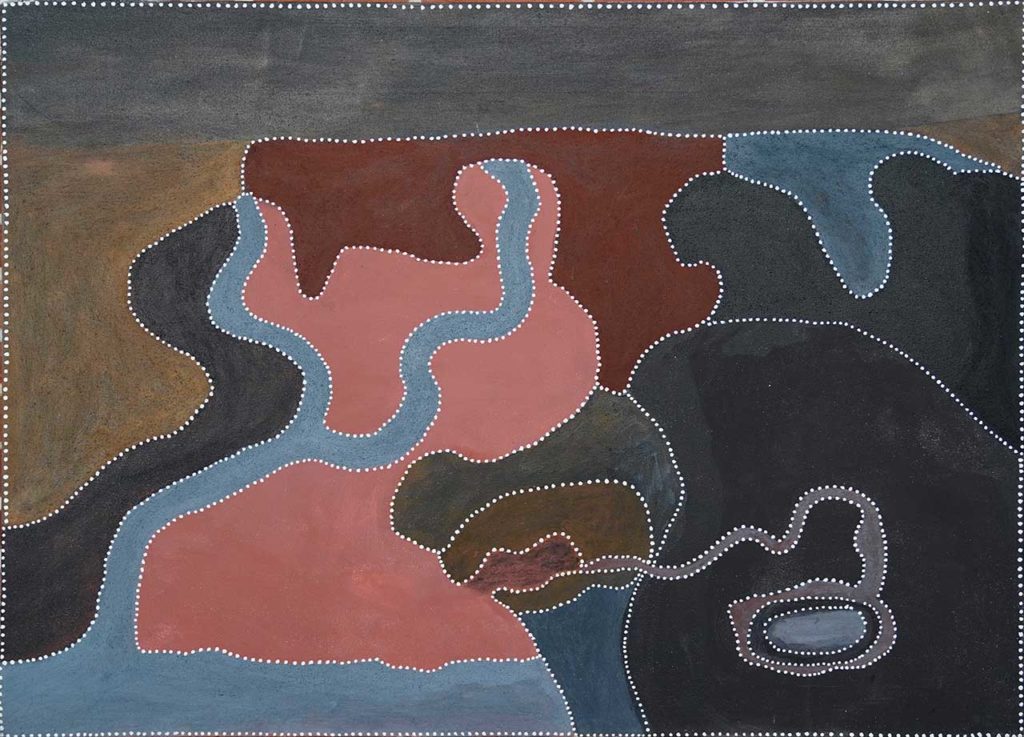
Rusty Peters
Rusty is Mabel’s younger brother. Rusty is the senior male artist at the art centre. He has an extensive practice, which has gone back decades. He is the custodian of the Darrajayin country, which is down south. He also paints the Garnkiny Ngarranggarni Dreaming story, but he does so in a very different way to Mabel.
Rusty also looks at systems of knowledge and how they're transmitted. One of his stories that he often paints is called Waterbrain. It is about the mutability of knowledge, how when we're young we don't know anything. We're born without any knowledge and we have to have this knowledge passed onto us. Then as we grow old we lose that knowledge again. As an older artist, he's struggling with that loss of knowledge and connection that he's feeling at the moment. As an artist, he grapples with systems of knowledge as well as those stories that he'd been given over the course of his career and his life. He is a very important artist out here in Warmun.


Shirley Purdie
Shirley is a traditional owner for a place called Violet Valley, which is about half an hour south of Warmun. She is the senior traditional owner down there, along with her brothers and sisters, and they're incredibly important artists here at the art centre. She focuses on the Ngarranggarni, the Dreaming stories that come out of that site, but she also does a huge amount of work surrounding the local flora and fauna.
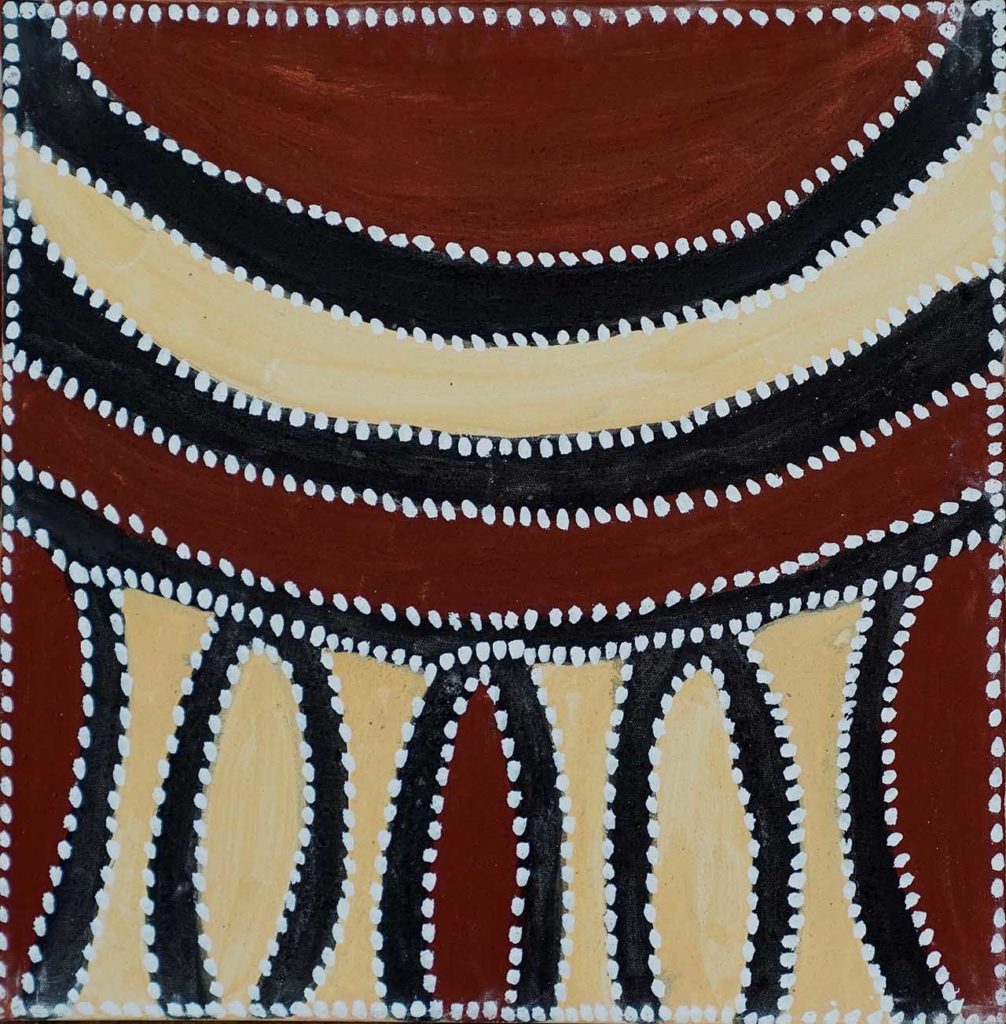
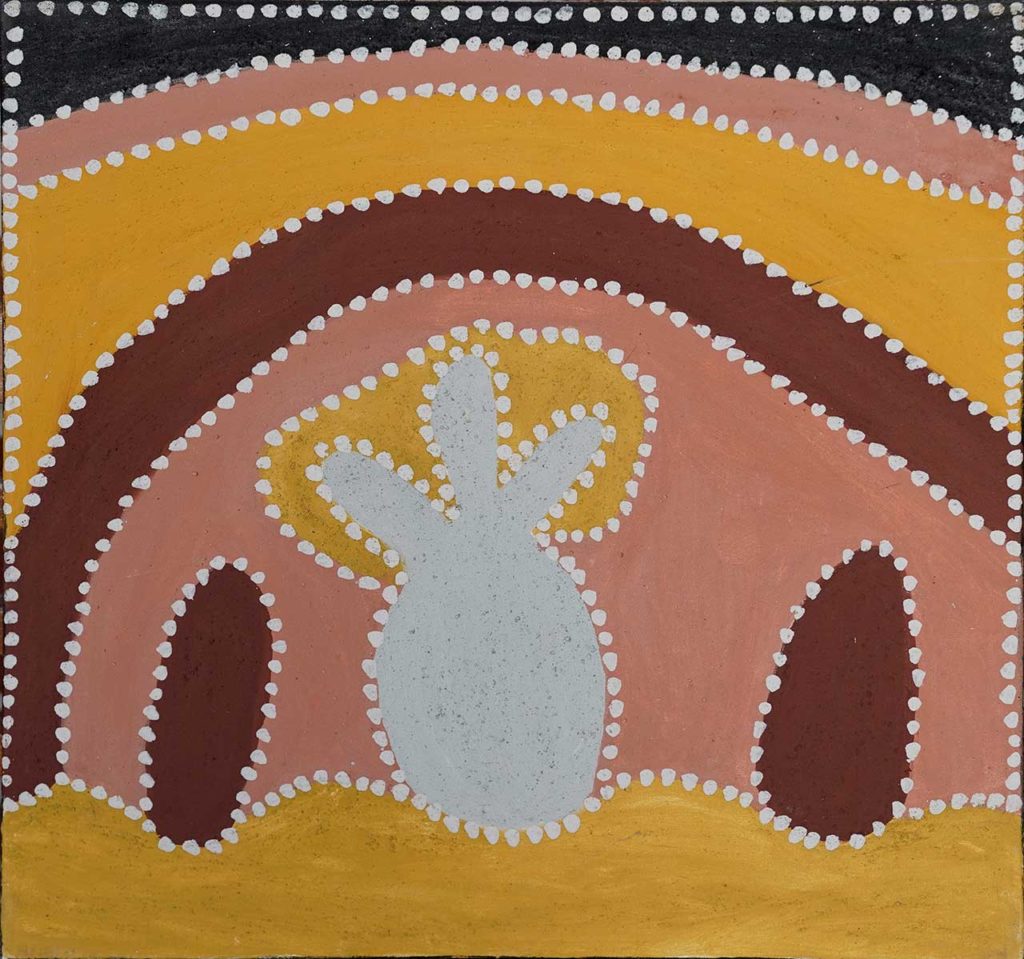
Phyllis Thomas
Ms Thomas passed away in 2018. She was a senior traditional owner from the Turner River, south of Warmun, just behind Purnululu National Park where the Bungle Bungles are situated. She quite often painted the Bungle Bungles, and that's quite, I guess, a political statement from her and from a lot of Warmun artists who depict that site. That is because in 2019 that site, the Bungle Bungles, went under native title determination between the Gija people and the Jaru people.
The painting of that site as a traditional place for the Gija people was showing that it was within their country and it did belong to them. The kind of rigid boundaries that exist now, were not common. It's a very western understanding of cartography to delineate space in such a way, but in order to protect the heritage of her country and her people, Phyllis is painting that land to show her people’s traditional knowledge of it.Ms. Thomas's other body of work focuses on the scarification process Gemerre, which would happen to women in traditional law processes. She was one of the last women in Warmun, in Gija country to receive those ceremonies, and so that's a deeply personal and sacred connection to kinship and law.
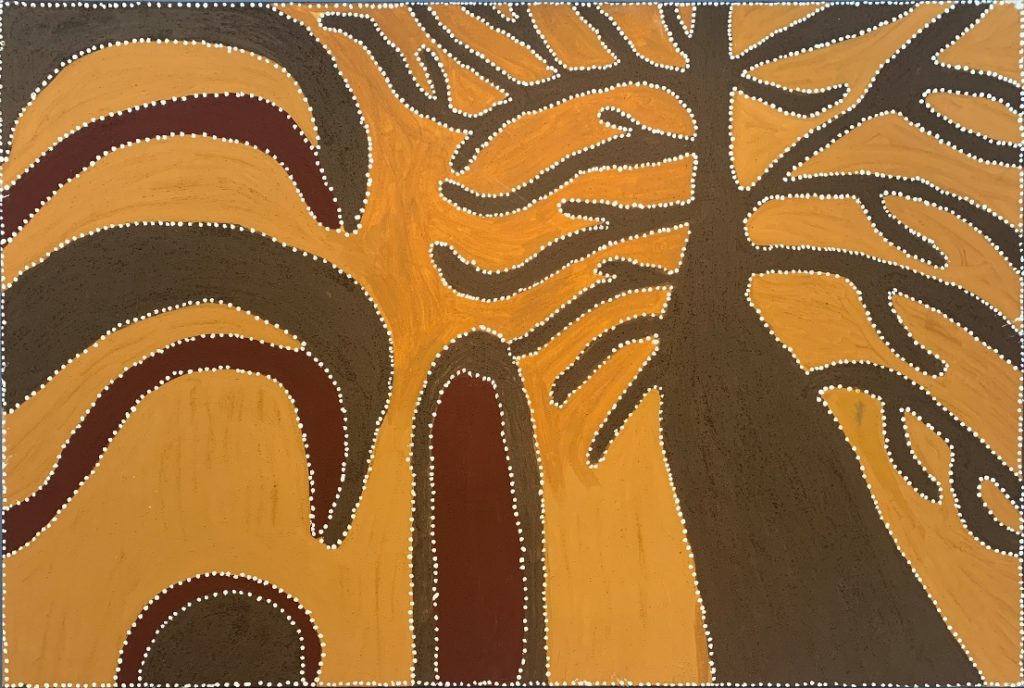
Peggy Patrick
Peggy Patrick is an elderly artist who no lives in Kununurra and no longer paints with the Art Centre. During her career, she had two main bodies of work: Marlam and Jumuluny. She created a series of what is called Marlam, Marlam.
Marlam is literally translated to hand, but it's also the technique of applying ochre, the white ochre, which is mawoondool, to the body in preparation for Joonba or Corroboree. She would paint these canvases, these rich black or brown canvases and then she'd paint them with her fingers in a kind of mimicry of that Joonba preparation process. It was a spiritual focus of her practise. Peggy also painted the jumuluny, which is the boab tree, which can be seen so often throughout the Kimberley. These are enormous, very often confronting bodily representations of boab trees. They were an important part of Peggy's practise.
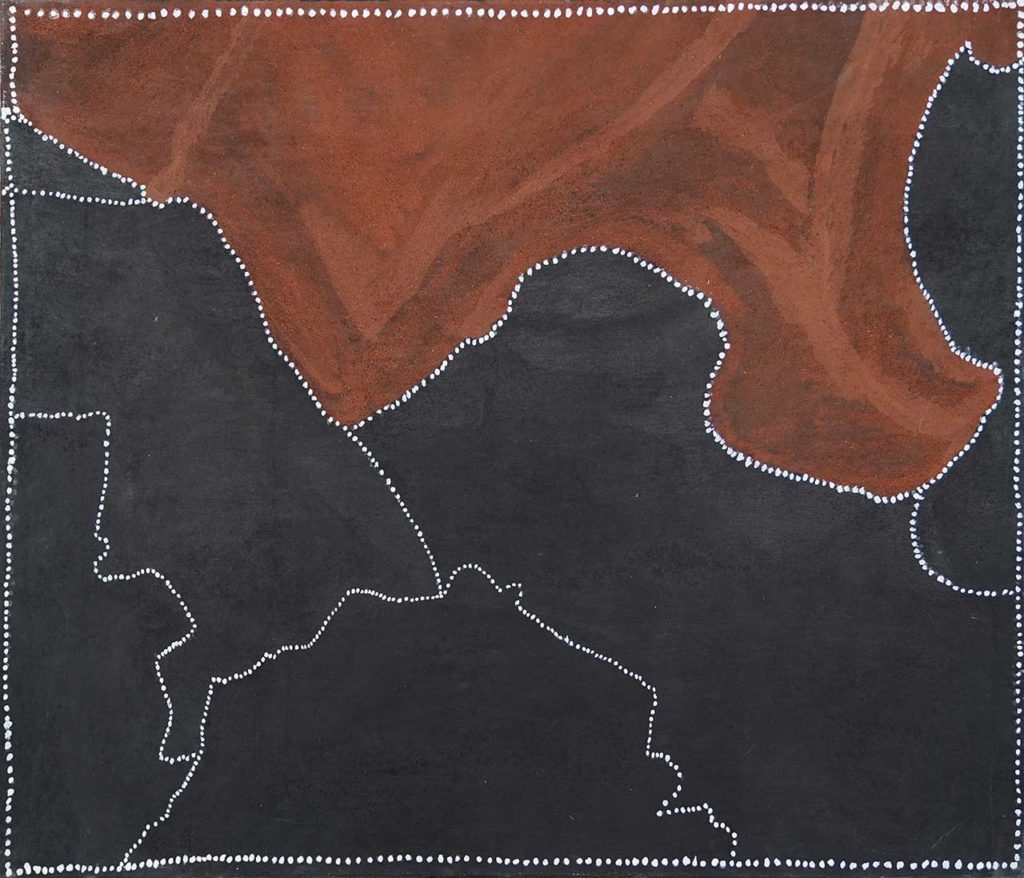
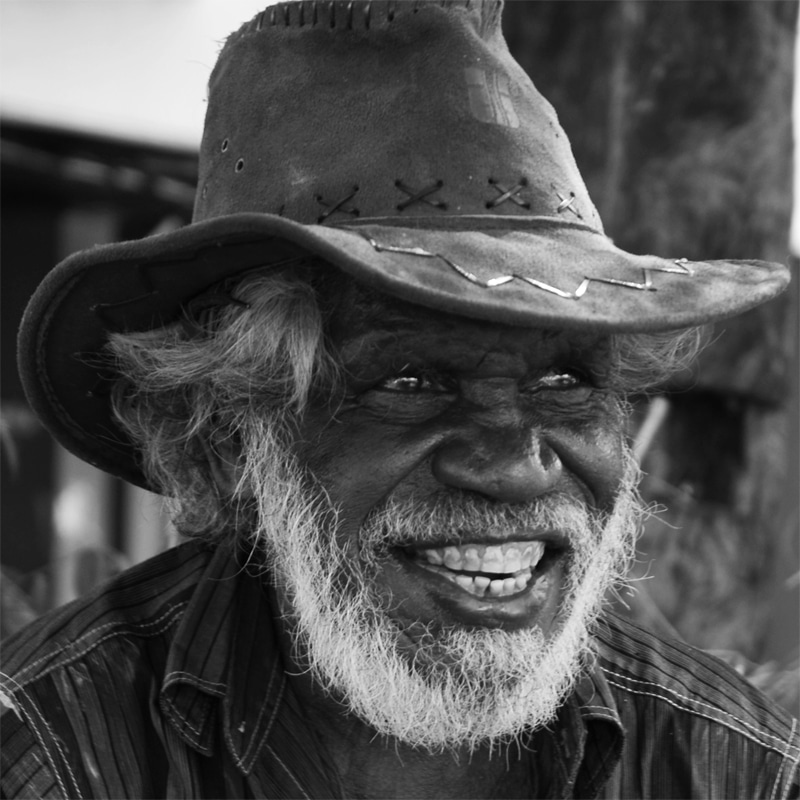
Churchill Cann
Churchill passed well before I came to the Art Centre. I never had a chance to work with him. He was from the same country as Patrick Mung Mung, Texas country north-east of Warmun. A number of Churchill's children and grandchildren live and work in Warmun and they have a deep connection to that landscape. Churchill painted almost exclusively landscapes influenced by that first wave of East Kimberley artists, people like Rover Thomas and Hector Jandany and George Mung Mung. It's an abstract representation of country and also Ngarranggarni Dreaming stories with these flat areas of colour. The flat areas of colour are punctuated by very gestural mark-making processes and the classic East Kimberley use of dotted lines.
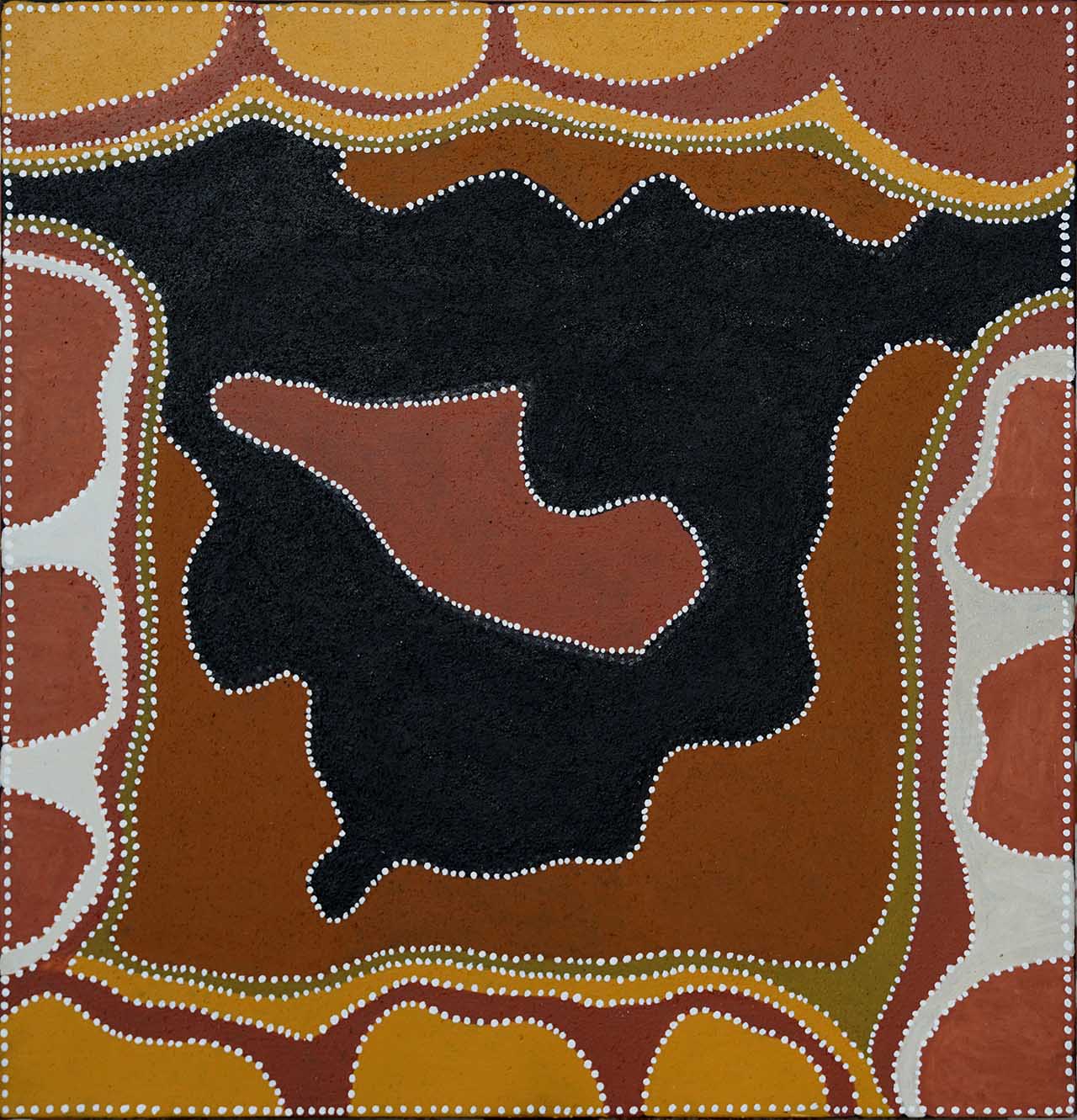
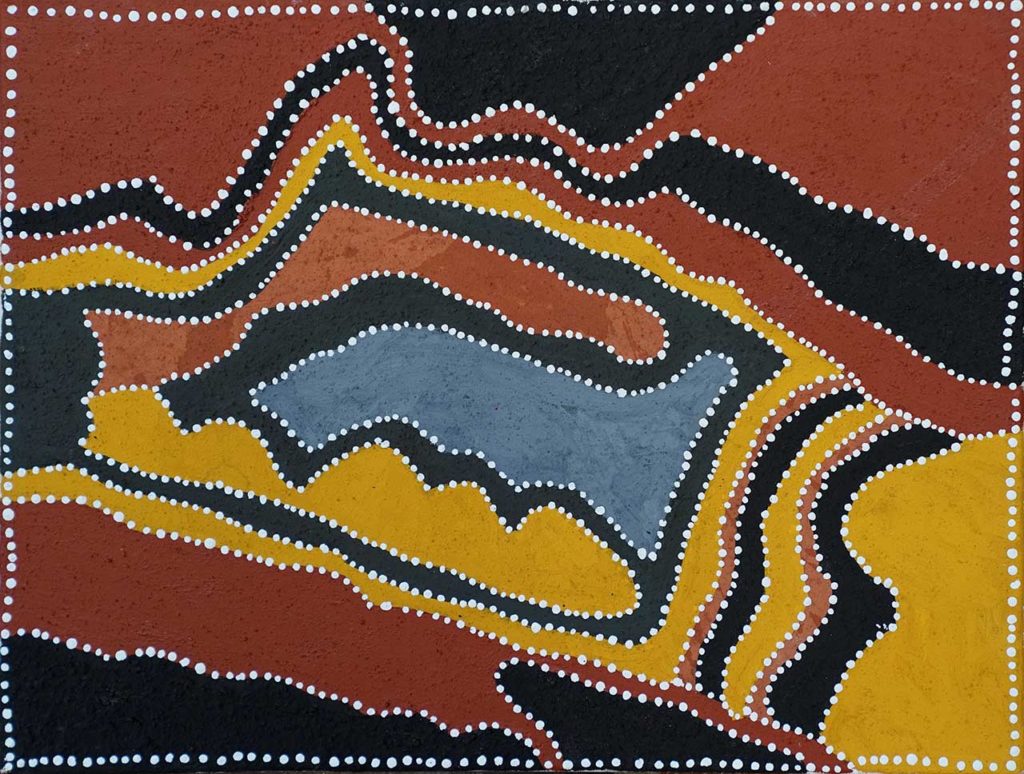
Beryline Mung
Beryline is a senior traditional owner from Frog Hollow. That is just beyond Shirley Purdie's country of Violet Valley, about half an hour south of Warmun. It is a place which has a set of water systems. These are beautiful waterholes that you can go and swim at all year round. Beryline paints almost exclusively about that country. The waterways can be life-affirming but also can take away life so quickly. They can be quite dangerous in the wet season as they become more fast-flowing and powerful. They also supply life for the fish, for the birds, for the animals that live around those areas. The water has sustained life for her family, for her skin group for many generations. A lot of her work, it's less representational than some of the other artworks. She's also got an incredible perspective when she creates these works. It's almost as if she's looking down on the world from a bird's eye perspective but then exploding the perspective outward. It's really gorgeous work.
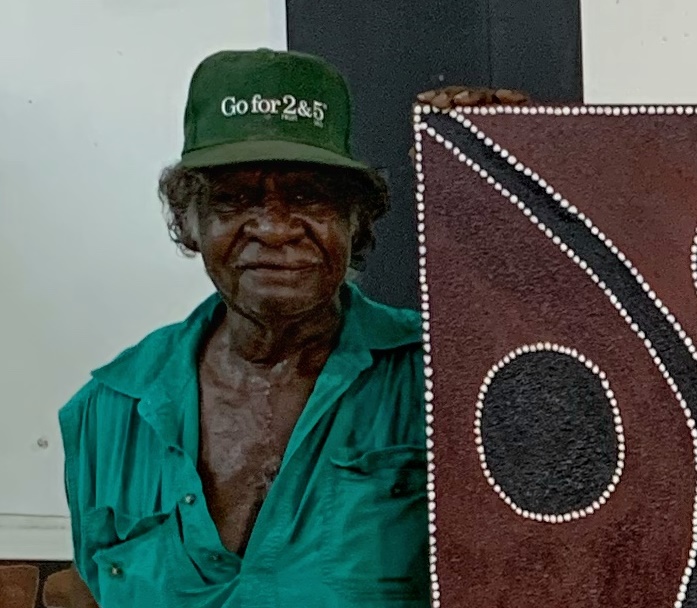
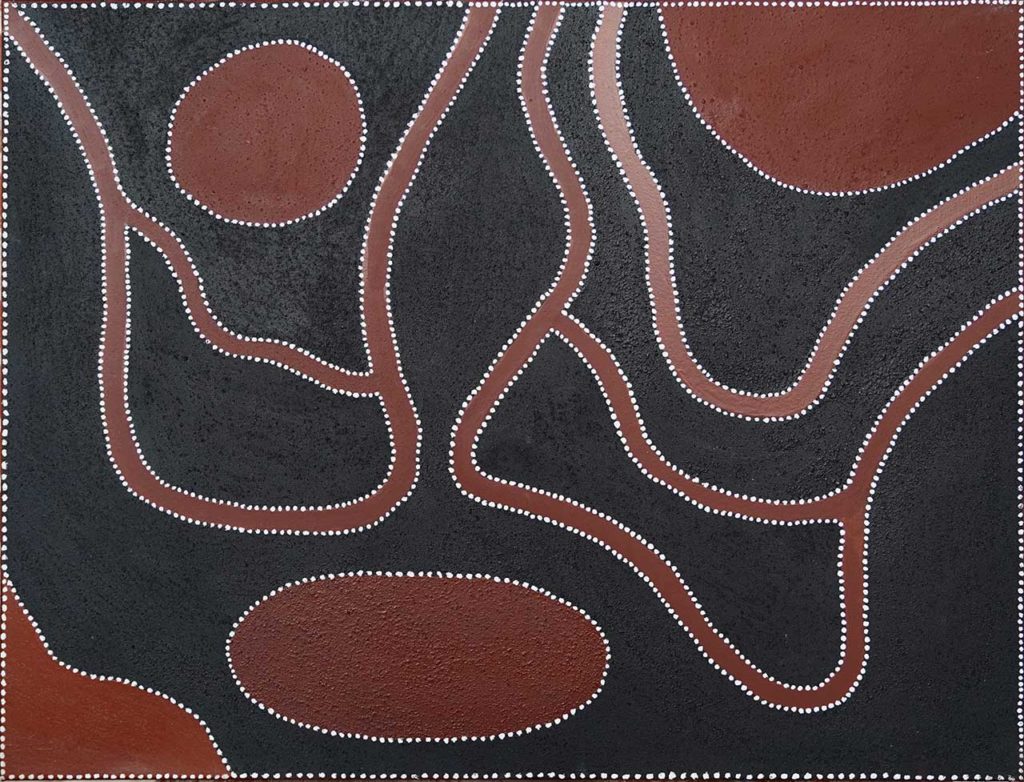
Tommy Carroll
Tommy Carroll is from Speewah, Doon Doon country, which is about an hour north of Warmun. He paints in a very traditional style as he uses almost exclusively just three colours: white, the mawoondool, black, charcoal, and a red ochre. His paintings are quite pared back artworks compared to some of the new generation of artists. He has a singular vision for his Ngarranggarni, which is his Serpent Dreaming story coming out of Doon Doon. He paints those waterholes and he paints that serpent's life cycle and location. Tommy has got a real commitment to that particular story in that particular country, which sees a really unified vision.
One of the things that Tommy does, which very few artists do in this country, is he paints using a material called galyuwin. This is sap from a Bloodwood tree which is then mixed with methylated spirits and water to achieve a kind of thin resin which can be applied to the surface of these paintings.
You'll find a waterhole which is bleeding and glistening on the surfaces he's painting because he's adhered this bloodwood resin to it. It’s quite a traditional method which very few artists are using at the moment, so quite a special technique for him.
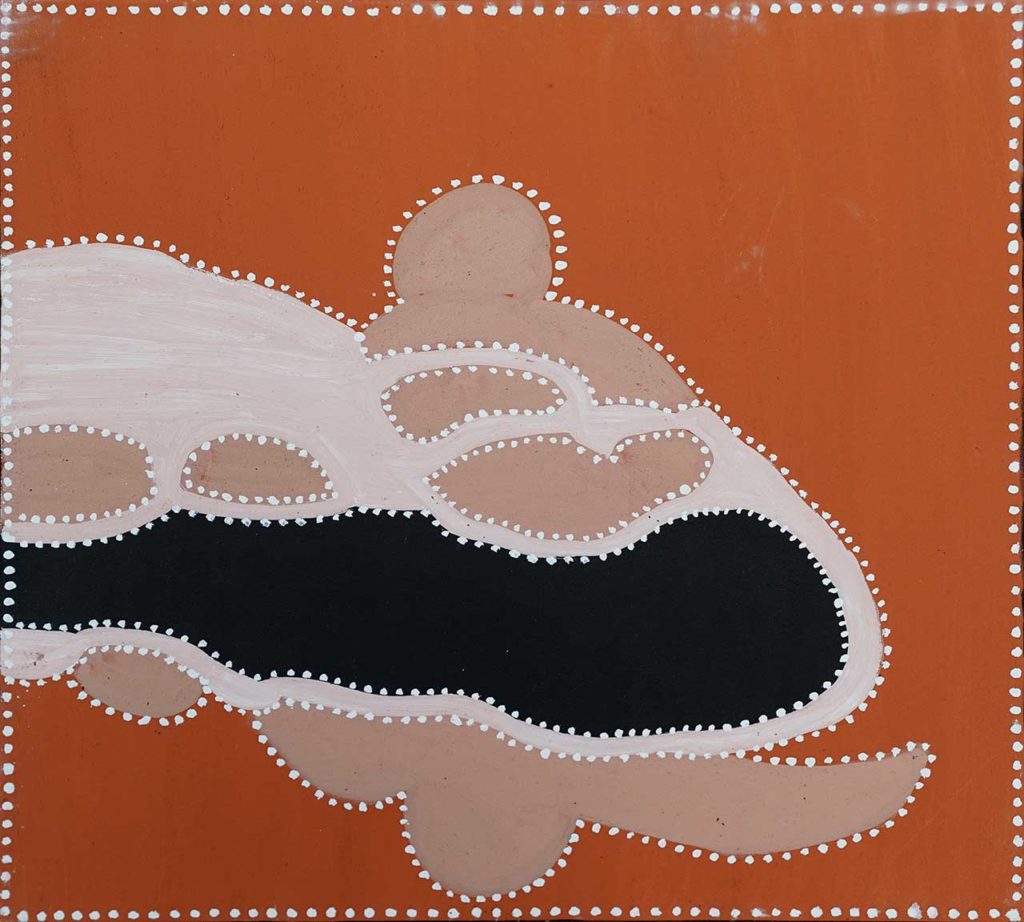
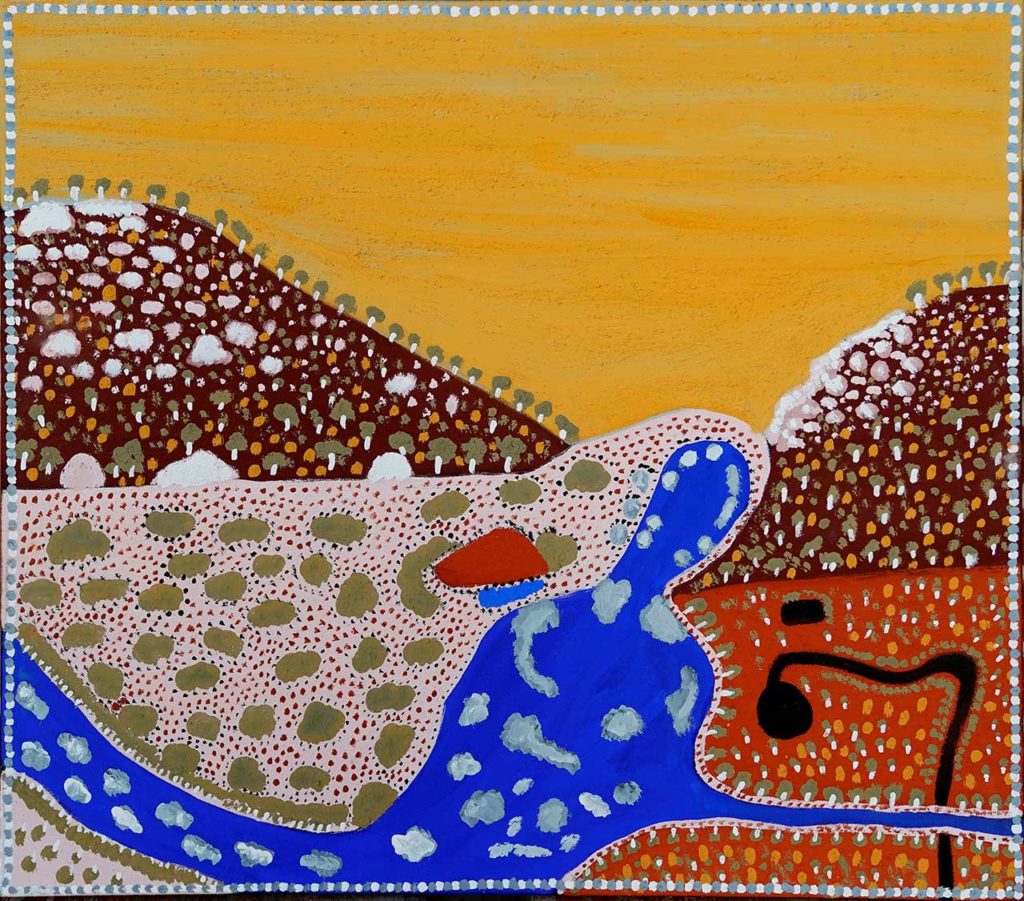
Kathy Ramsay
Kathy Ramsey is the daughter of Rammey Ramsey and of Mona Ramsey. They are two senior traditional owners from out at Bow River. Kathy is now a leader of the next generation of Bow River artists. The Bow River community, known as Juwurlinji in Gija, is located about half an hour north of Warmun. Kathy has taken a lot of those stories from Bow River and along with her sister Tracey, is the custodian and protector for future generations of those stories.
Ramsey Ramsey, Kathy's Dad, was one of the first Gija artists to experiment a lot with acrylic pigments. Kathy has taken that on board and she uses acrylic paint and acrylic pigment in her work. You'll see these incredible palettes of colours in her work. They will be punctuated by incredibly bright electric blues or electric oranges that really break up the surface of the painting. This is a departure from what is traditionally perceived as Gija painting, which is great to see because it's taking a wonderful artistic tradition and bringing it to a future generation. She paints the Ngarranggarni stories, the dreaming of Bow River, but she also paints station stories and often evidence of station life can be seen in her paintings, whether it's cattle yards or water tanks, these can be seen in the landscape.
I think another interesting facet of Kathy's work is the introduction of a lot of religious iconographies. As a practising Christian, she'll often paint images of Christ or of the crucifix or of her ancestors who have gone to heaven, watching down over the existing Gija population. You’ll see a very traditional aesthetic combined with Christian iconography is really remarkable and a quite unique component of her practise.
View the Exhibition: The Ochre Story - Warmum Art Centre Exhibition
